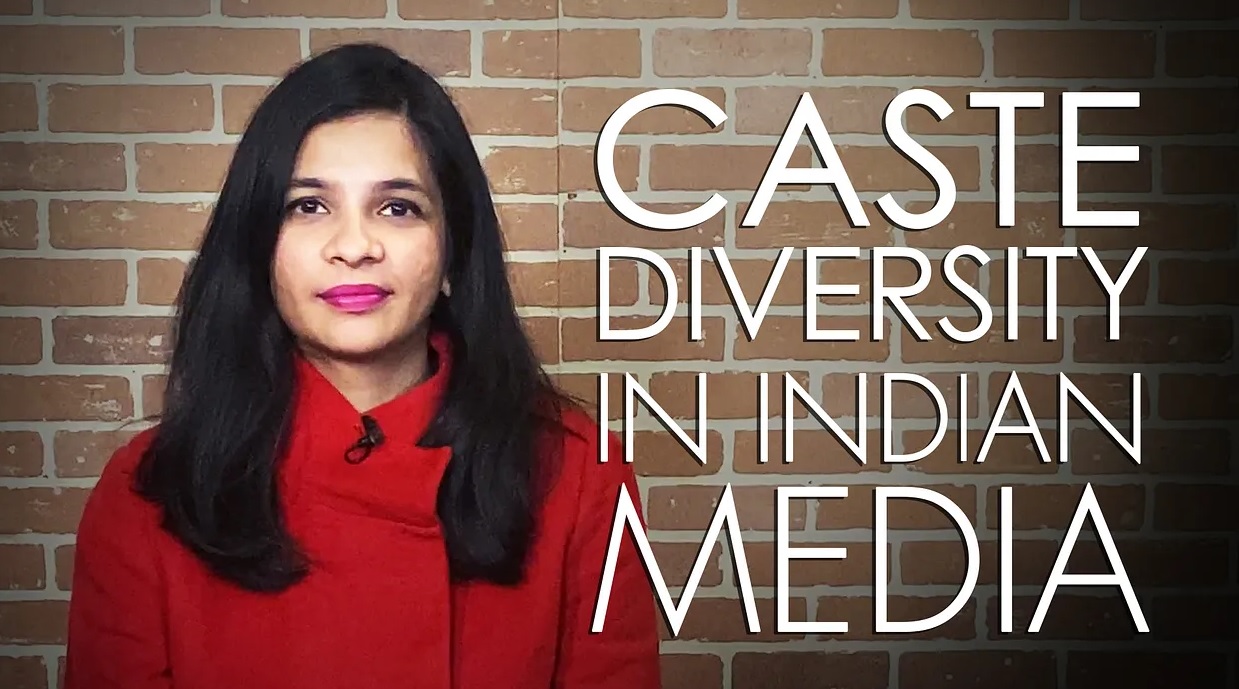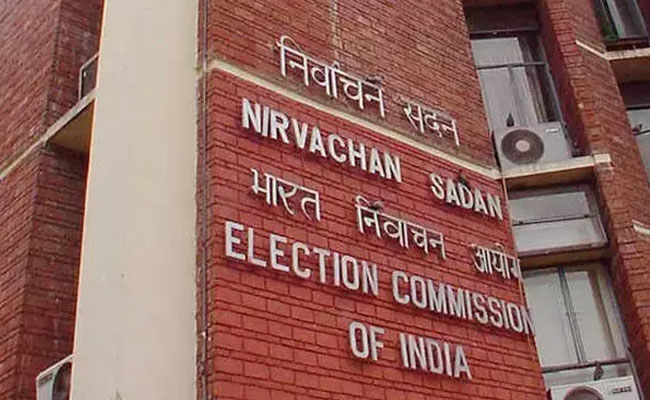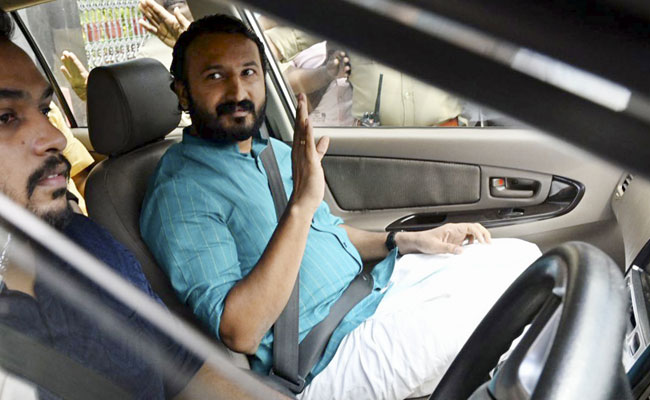This story was first published in News Laundry, and is a transcript of a video report posted by News Laundry refering to their project report on how caste system plays out in the Indian newsrooms. You can watch the full video report (source of this story) by News Laundry by clicking here.
Did you know that three out of four anchors of flagship TV news debates are upper caste? That not one is Dalit, Adivasi, or OBC?
That merely 10 out of the 972 articles featured on the covers of a dozen magazines that we studied are about issues related to caste?
That no more than five percent of all articles published in the country’s six largest English newspapers are written by Dalits and Adivasis?
These are some of the shocking findings contained in the report Who Tells Our Stories Matters: Representation of Marginalised Caste Groups in Indian Newsrooms, which was published last year by The Media Rumble in association with Oxfam India.
Sometime in 1996 a foreign correspondent called up journalist BN Uniyal to ask him if he knew any Dalit journalist, after spending days talking to friends and colleagues Mr. Uniyal was unable to find anyone like zero literally. In 2017, after having conducted a similar search across the country for more than 10 years journalists Sudipta Mondal said he was only able to find eight Dalit journalists in English media and only two of them risked coming out to him.
Between October 2018 and March 2019 News laundry and Oxfam together conducted a research project to find out more about the representation of marginalized caste groups in Indian media, the results were shocking to say the least, three out of every four anchors in flagship debates on TV news were upper caste not one Dalit or Adivasi or OBC. Only ten out of the 972 articles featured on the cover pages of the 12 magazines that we looked at were about caste related issues and no more than 5% of all articles in English newspapers were written by Dalits or Adivasis. The research suggests that Indian media is still dominated by upper castes, scheduled tribes are almost entirely absent while scheduled castes are represented mostly by social activists and politicians not by journalists OBCs are similarly underrepresented even though they are estimated to constitute over half of India's population. The fact that me a ‘Suvarna’ is sitting here telling you all this in a video is testimony to the findings of this report.
The report is basically aimed at opening and informing a public debate on discrimination and social exclusion in media. Let's go back to the basics first, caste is an ancient system of discriminatory segregation that is determined by birth. It is based on notions of purity and pollution and is rooted in the Hindu doctrine, the caste system divides Hindus into four varnas or categories these are, Brahmin, Kshatriya, Vaishya, and Shudra, those who fall outside these endogamous groups each with a preordained social function are known as Dalits or Scheduled Castes and Adivasis or Scheduled Tribes the still pervasive caste system unsurprisingly raise its ugly head in our newsrooms - there are vast sections of India's marginalized caste groups who lack access to media platforms and discourses that shape public opinion. This leads to certain voices not being represented in our news ecosystem.
Take for instance leadership positions in newsrooms, of the 121 newsrooms that the report looked at a whopping 106 were occupied by journalists from upper castes and none by those belonging to Schedule Caste or Scheduled Tribes. Let's take a peek at the panelists on English TV news channels, a mere 5.6 percent of panelists across the survey channels belong to Scheduled Castes and shockingly not even 1% of them belong to Scheduled Tribes, what's even more bizarre is that during the discussions on caste issues 62% of the panelists across news channels were from the general category, 89% of leadership positions in English TV news channels belong to the general category along with a 76% of anchors who hosted flagship shows the results got even more skewed when we looked at Hindi news channels where hundred percent of the leadership positions belong to the general category and so did 80 percent of the anchors on prime time shows.
Let's take a look at newspapers, according to the report media professionals from marginalized caste groups do not occupy any leadership positions in the six English newspapers and seven Hindi newspapers that we looked at. In the 16,000 articles that we poured over in English newspapers over 60% of the articles were written by upper caste writers in Hindi newspapers nearly 56 percent of writers belong to the general category the only silver lining was Amar Ujala where hundred percent of the articles published on caste issues were written by contributors belonging to the marginalized caste groups.
Now let's look at digital media 84% of all leadership positions belong to the general category just like newspapers and TV news channels there is no representation from scheduled tribes and scheduled castes in the digital media space, in fact the study found that 56 percent of writers belong to the general category and yes news laundry was also one of the organizations that was surveyed. Now coming to magazines the study chose 12 magazines covering a range of interests
among them 63.5% percent of the total output came from the writers belonging to general category and only 11.2% from Scheduled Castes and Scheduled Tribes combined while OBC writers contributed to a meager 1.1%.
Talking about giving space to caste issues only India Today, India Today Hindi, The Caravan and Sarita gave space to caste issues on their covers. However, a majority of the caste stories published in these magazines were penned by general category writers. At India today Hindi this percentage stood at an overwhelming 99.5 percent the report clearly signifies the dire need for the inclusion of marginalized groups in India newsrooms for an equitable and developed society the representation of all is a must and more than anywhere else this applies to our newsrooms.
This story was first published in News Laundry, and is a transcript of a video report posted by News Laundry refering to their project report on how caste system plays out in the Indian newsrooms. You can watch the full video report (source of this story) by News Laundry by clicking here.
Let the Truth be known. If you read VB and like VB, please be a VB Supporter and Help us deliver the Truth to one and all.
Ahmedabad (PTI): The ongoing Special Intensive Revision (SIR) of the electoral rolls in Gujarat has revealed that more than 17 lakh deceased voters were still included in the existing voter list across the state, a release by the office of the Chief Electoral Officer (CEO) has stated.
According to the release issued on Thursday, the SIR exercise started in Gujarat on November 4 with booth-level officers (BLOs) distributing enumeration forms in their designated areas.
The campaign will continue till December 11.
"In the last one month, enumeration forms have been distributed to more than five crore voters registered in the 2025 electoral roll. In most of the 33 districts, 100 per cent of the distribution has been completed. Work on digitising the returned forms is currently underway. So far, the digitisation work has been completed in 12 out of 182 assembly constituencies," it said.
These include Dhanera and Tharad of Banaskantha district, Limkheda and Dahod (ST) of Dahod district, Bayad of Aravalli district, Dhoraji, Jasdan and Gondal of Rajkot district, Keshod of Junagadh district, Mehmadabad of Kheda district, Khambhat of Anand district and Jalalpore of Navsari district.
Dang district is at the forefront in this work with 94.35 per cent digitisation of the counting forms, said the release.
"During this exercise, it was revealed that 17 lakh deceased voters were still included in the electoral roll across the state. More than 6.14 lakh voters were found absent from their addresses. It has been noticed that more than 30 lakh voters have permanently migrated," the release said.
BLOs found more than 3.25 lakh voters in the "repeated" category, which means that their names figured at more than one place, the release stated.





